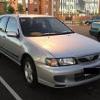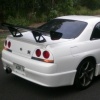Advice
Announcements
-
Similar Content
-
Latest Posts
-
I just checked my belt, it wasn't super loose but I could bend it past 90 degrees a small amount so I tightened it up and for the first time ever my car didn't crank first time, had to crank it again lol. Don't know if that was because I tightened the belt or if it's my starter motor going out (been having slow starts for some time). Coulda also been when I was recording I didn't crank the key properly and it didn't save the recording lol
-
My purchase experience was no where near as glorious as yours but still a significant moment in my life! Yeah that's a bit of a dilemma as to whether you bring it back or not! Obviously a massive waste of time and effort to bring it back if you're only going to move there anyway!
-
To be fair passengers who aren't silly and have been in proper fast cars have often been pretty impressed once you hit 4th gear
-
By BaronOBeefdip · Posted
I suppose that's true. Barring almost any situation, I'll never sell so what the market does is kind of irrelevant to me. It's possible I'd make most of my money back. That spreadsheet I mentioned? Maybe I could make back more than what the car's total costs thus far are, but the parts and all that is possibly a different story... Thanks for reading. It was certainly a good moment and just makes the ties to the car that much stronger. It's exciting that the option will be there to bring it over, however I have some plans with a shop that may end up keeping the car there longer, not sure. Coupled with the fact I want to move there and haven't solidified any path yet. So in a way, it feels like I'm in a limbo state that is uncertain; time will tell.
-








Recommended Posts
Create an account or sign in to comment
You need to be a member in order to leave a comment
Create an account
Sign up for a new account in our community. It's easy!
Register a new accountSign in
Already have an account? Sign in here.
Sign In Now